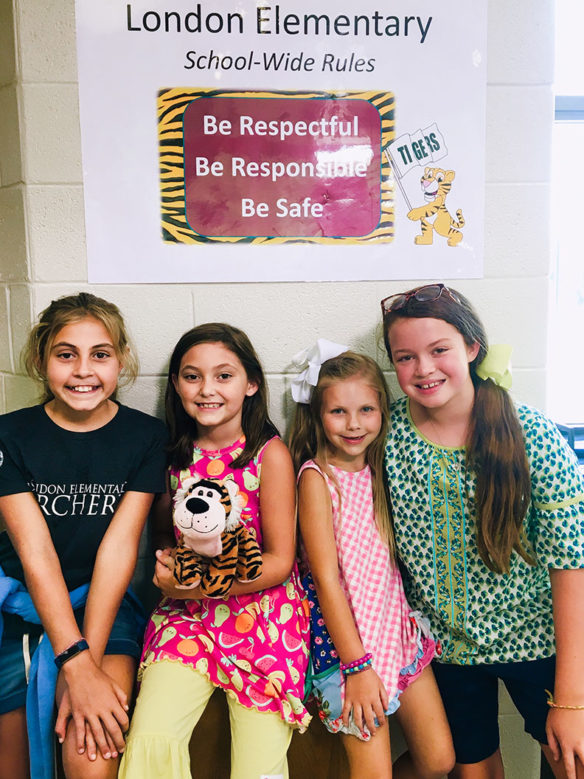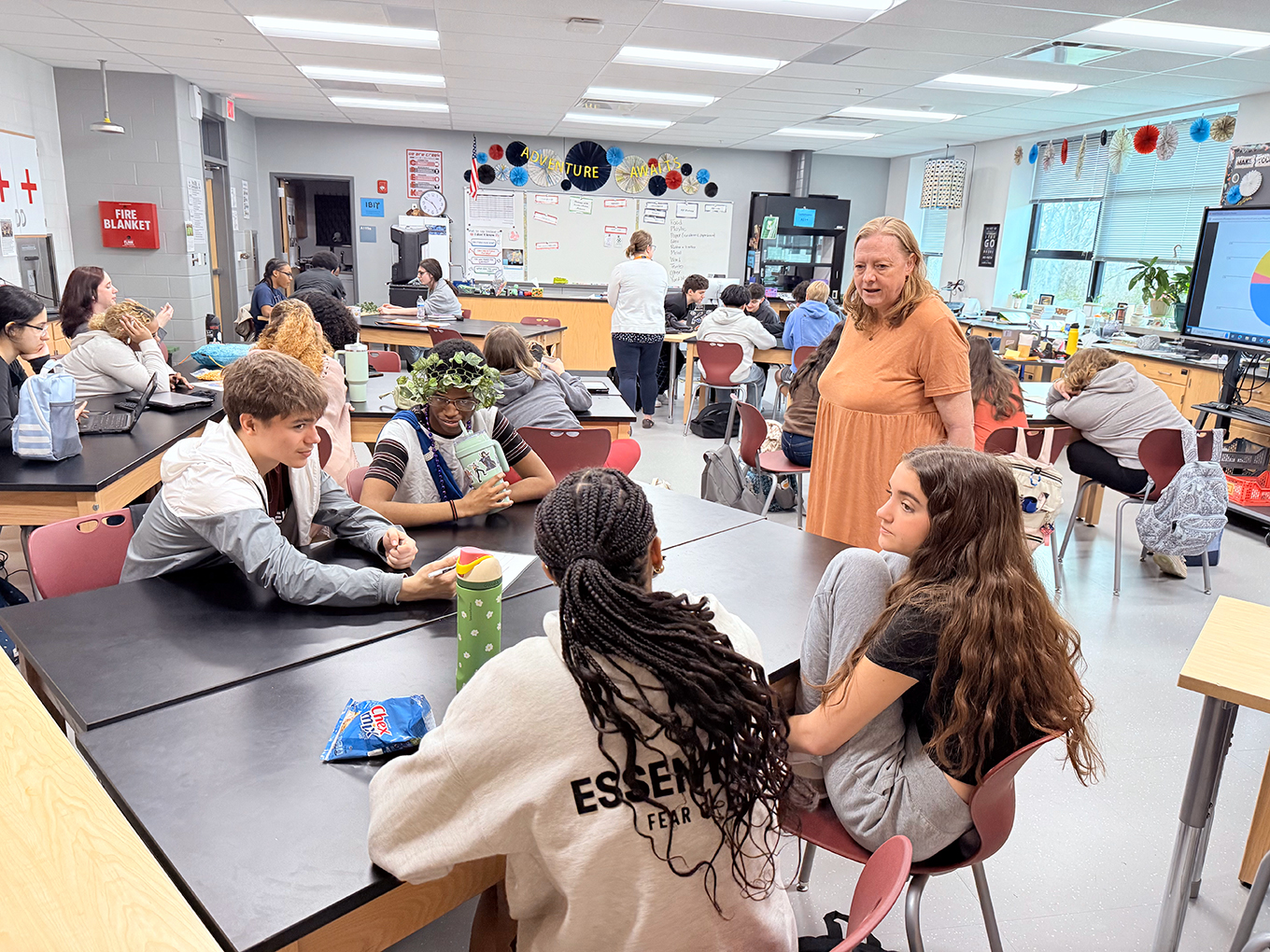
Students at London Elementary School are in for a treat this year with the reboot of the school’s Positive Behavioral Intervention System mascot, Tippy the Tiger. Tippy will provide tips on topics such as hallway behavior, cafeteria conduct and restroom procedures.
Submitted photo by Melanie Callahan, August 2019
London Elementary School (Laurel County) students are in for a terrific treat this year. Students in pre-K through 5th grade are being introduced to a reboot of their Positive Behavioral Intervention System (PBIS) mascot, Tippy the Tiger
Tippy will provide tips of all types to London’s students on topics such as hallway behavior, cafeteria conduct and restroom procedures. This “student with stripes” will join the school in both digital and furry configurations throughout the year. In fact, this clever creature is set to appear during video segments at pep rallies and will be oft-quoted during morning announcements.

Melanie Callahan
Tippy’s image is designed to be showcased in classrooms, hallways and even on the cafeteria walls. His media file can be edited, cut, pasted and shared for the school’s campaigns and creations. With all this hype, Tippy might be trending by second term.
Do institutions of learning need logos and puppets to teach school skills? Think of it as educational marketing or, to turn a phrase, “building a brand.”
Exposure to consumerism and merchandising begins at an early age. Young people – from toddlers to teens – are inundated with advertising and images that make even the most-precocious child utter that simple phrase – “I want.” It is a visceral response to something new and cool. Why not apply that notion of buy-in to behavioral management and instruction in a way that reaches our students?
If creative marketing works for sneakers, games and toy companies, it might just work for an elementary school. Public service campaigns have used this logic for decades. The idea for such a promotion could be likened to Smokey the Bear, Woodsy Owl or Yuck Mouth. Those characters earned our love and trust because they taught us about something that mattered. We should not play with matches. We should not litter. We should brush our teeth.
How did Tippy earn his stripes? Tippy the Tiger was born during a professional development workshop during July of 2019achers explored and reviewed the school’s PBIS manual and accompanying visual-aids. The content was thorough and well-written, but it lacked a kid-friendly connection to the desired behaviors and procedures. The posters were dated and utilized clip art that seemed nonspecific and irrelevant. The wording was a bit convoluted and difficult to understand for emergent- or nonreaders.
During this hands-on workshop, several teachers worked together to develop and introduce the cartoon tiger who could make practicing procedures seem fun and teach us all a thing or two about making smart choices. The response from faculty and staff was encouraging. Principal Tracie Smith and Assistant Principal Phillip Jones greenlighted the concept and process, and Tippy made his debut on the first day of school in August.
London Elementary School’s administration, teachers and staff have high hopes of touting Tippy to promote specific behavior and procedural expectations with ad-agency flare that will get results. Tippy will not serve as a mere mascot. This smiling, engaging tiger will be a role-model for students in need of a friend who strives to do the right thing all the time. Tippy will make it cool to follow rules and directions.
In fact, Tippy’s presence will enhance the classroom environment as faculty and staff model “the Tippy way” for children to produce a positive impact through pro-social behavior among peers and fellow learners. Tippy’s image and message is a push for constructive and meaningful routines that serve others and promote safety and character education in the school and beyond.
During London Elementary’s recent 2019-2020 open house, hundreds of students and families came to introduce themselves, get new haircuts, and eat hot dogs and shaved ice. In the midst of this mind-blowing open house and community event, several students stopped by my 4th-grade classroom to meet their teacher.
Tippy’s picture – in a variety of wardrobe choices and poses – was noticed quickly by the 10-year-olds. They asked questions, looked Tippy over a few times and decided that the two-tone tiger was “awesome.” For a cartoon drawing, this is the ultimate kid compliment, and it means that Tippy the Tiger might indeed resonate with young students.
Tippy can use his awesomeness for more than entertainment or status, unlike some other ads and promotions. Tippy the Tiger can build a platform to create a culture of kindness, responsibility and safety. He can be more than a cartoon or puppet; he can build up a kid’s confidence and conscience. Tippy can model, guide and inform us. Tippy the Tiger can be a teacher, too.
Melanie Callahan is a 4th-grade teacher at London Elementary School (Laurel County). She is a graduate of the University of Kentucky, received her master’s degree from Bellarmine University and Rank I from the University of the Cumberlands. She is an author and illustrator who is studying leadership and family engagement in education through Harvard University’s Extension School. Callahan is the 2020 Kentucky Elementary School Teacher of the Year.




Congratulation, Ms Melanie Callahan.